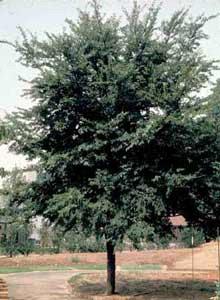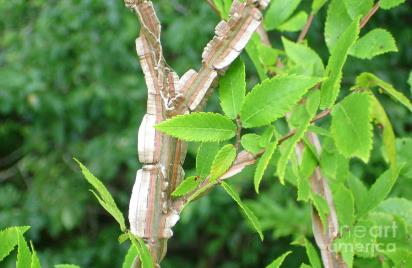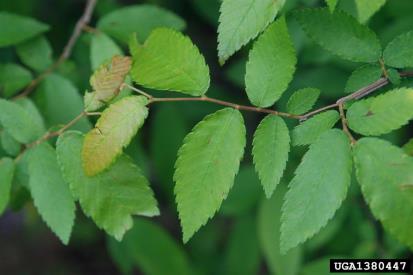
The mast from winged elm is eaten by birds and animals, and the twigs and leaves are important for white-tailed deer (16). Both twigs and leaves are most succulent, nutritious, and digestible during spring and are less useful as food the rest of the year because after abscission, the leaves lose most of their quality and digestibility.1
Elm wood is used principally for furniture, hardwood dimension and flooring, boxes, and crates. Elm’s excellent resistance to splitting has made it a choice wood for the manufacture of high quality hockey sticks. The manufacture of furniture continues to increase the demand for elm for bent parts of chairs such as rockers and arms.1
The leaves have a leathery texture and a double serration at its margin. They are dark green and alternate with an oblong but pointed shape. Winged elm has oval shaped samaras as its fruit that are less than half an inch in total length.2
- Winged Elm. USDA. https://www.srs.fs.usda.gov/pubs/misc/ag_654/volume_2/ulmus/alata.htm. No Publication Date. Accessed January 18, 2024.
- How to Identify Types of Elm Trees by the Leaves and Barks. Gardening Chores. https://www.gardeningchores.com/elm-tree-identification/#5-ulmusalatawingedelm. Updated on June 11, 2022. Accessed January 18, 2024.
- https://bugwoodcloud.org/images/1536×1024/1380447.jpg
- https://www.uaex.uada.edu/yard-garden/images/plant_db/trees/ulmus_alata_f_m.jpg
- https://images.fineartamerica.com/images-medium-large-5/winged-elm-lew-davis.jpg
- https://www.gardenia.net/storage/app/public/uploads/images/vmb1eIWaNdcMhcoA0bRd8qE lFLXM7nVdFCmv3asF.webp
- https://7song.com/wp-content/uploads/2017/11/Winged-elm-4-1500×1000.jpg





